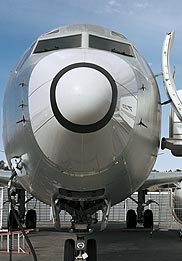
 |
Used appropriately, the cost index (CI) feature of the flight management computer (FMC) can help airlines significantly reduce operating costs. However, many operators don't take full advantage of this powerful tool. |
| VARIABLE FUEL PRICES, FUEL TANKERING, AND FUEL HEDGING MAKE THE COST INDEX CALCULATION COMPLICATED. | by Bill Roberson, Senior Safety Pilot, Flight Operations |
This article is the first in a series exploring fuel conservation strategies.
COST INDEX DEFINED
The CI is the ratio of the time-related cost of an airplane operation and the cost of fuel. The value of the CI reflects the relative effects of fuel cost on overall trip cost as compared to time-related direct operating costs.
| In equation form: CI = | Time cost ~ $/hr |
| Fuel cost ~ cents/lb |
The range of allowable cost indices is shown in Figure 1 (see next page). The flight crew enters the company-calculated CI into the control display unit (CDU) of the FMC. The FMC then uses this number and other performance parameters to calculate economy (ECON) climb, cruise, and descent speeds.
For all models, entering zero for the CI results in maximum range airspeed and minimum trip fuel. This speed schedule ignores the cost of time.
Conversely, if the maximum value for CI is entered, the FMC uses a minimum time speed schedule. This speed schedule calls for maximum flight envelope speeds, and ignores the cost of fuel (see fig. 2, on next page).
